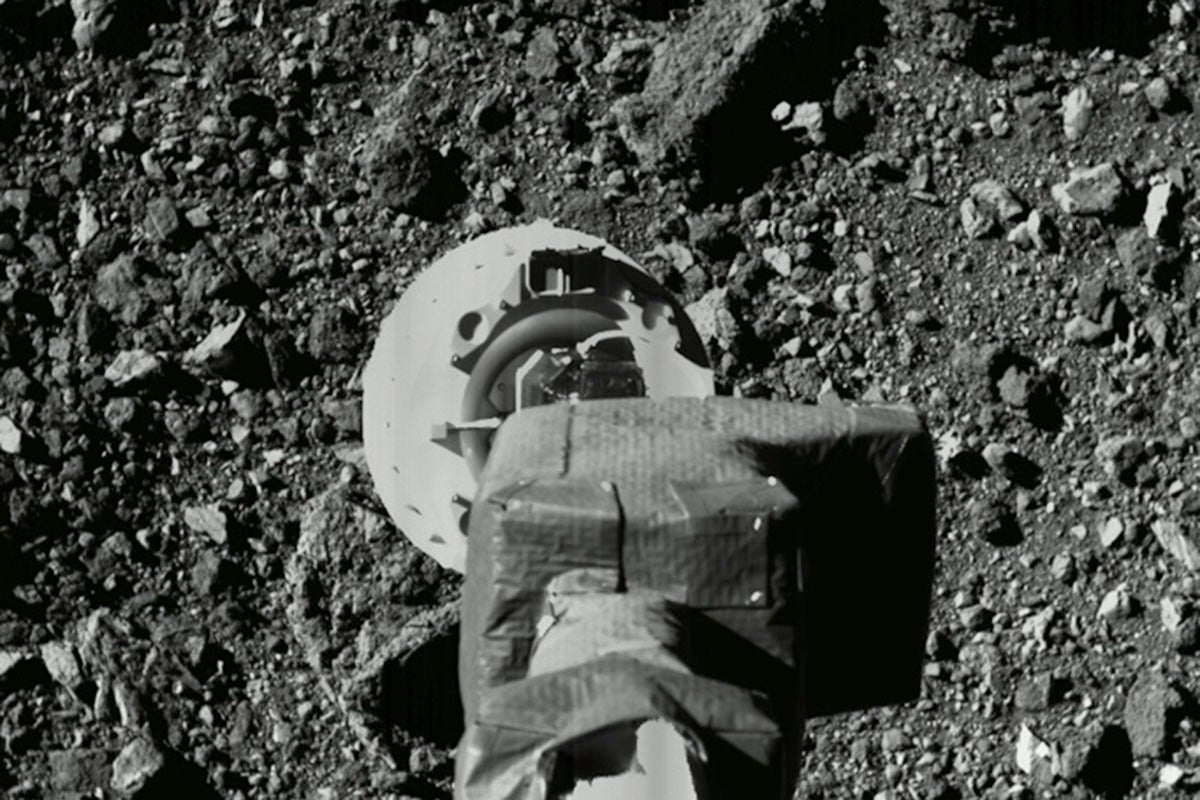If UCF physics Professor Humberto Campins was a betting man, he should run out and play the lottery.
The planetary scientist, who is an international expert on asteroids, predicted a finding from NASA’s OSIRIS-REx mission to asteroid Bennu — remnants of another asteroid scattered across its surface.
The spacecraft took images and made observations of Bennu when it arrived in December 2019. The spacecraft’s mission is to collect a sample of Bennu and return it to Earth in 2023. The touch-and-go sample collection maneuver is scheduled for October 2020.
“Some people told me there was a very low chance of finding bright remnants of another asteroid on Bennu,” says Campins, who has been studying asteroids for more than 30 years. “But nature went ahead and surprised us. It’s even more interesting than what I was expecting. And it means we just have so much more to learn about how our solar system developed.”
The discovery is documented this week in the journal Nature Astronomy.
Daniella DellaGiustina of the Lunar and Planetary Laboratory at the University of Arizona, Tucson and Hannah Kaplan of NASA’s Goddard Space Flight Center are the lead authors of the paper. They work, respectively, in OSIRIS-REx’s imaging and spectroscopy groups, which focus on determining the structure and composition of the asteroid. Campins is also a member of the OSIRIS-REx Science Team and is a co-author.
It is thought that most small asteroids are rubble piles, resulting from collisions. Bennu is itself such a rubble pile, derived from the disruption of a larger parent asteroid. Impact processes were very important in the formation of planets, moons, satellites, comets and asteroids in our solar system. But how exactly it all happened is still unclear and this discovery helps us understand this process better.
“We found six boulders ranging in size from 5 to 14 feet (about 1.5 to 4.3 meters) scattered across Bennu’s southern hemisphere and near the equator,” DellaGiustina says. “These boulders are much brighter than the rest of Bennu and match material from (asteroid) Vesta.”
The team’s working hypothesis is that Bennu inherited this material from its (larger) parent asteroid after a fragment from Vesta impacted Bennu’s parent asteroid. When the parent asteroid was catastrophically disrupted, a portion of the Vesta material (crystalline rocks made of a mineral called pyroxene) was pulled back by gravity and collected onto the surface of the newly formed Bennu rubble pile, according to Kaplan.
“The fact is that these exogenous pieces were not from just any asteroid, but they were from asteroid Vesta, arguably the most recognizable asteroid in the belt.”
The new information sheds light on the intricate orbital dance of asteroids and on the violent origin of Bennu, according to a NASA press release related to the new discovery.
From the NASA Release
The unusual boulders on Bennu first caught the team’s eye in images from the OSIRIS-REx Camera Suite (OCAMS). The boulders appeared extremely bright, with some almost ten times brighter than their surroundings. The team analyzed the light from the boulders using the OSIRIS-REx Visible and Infrared Spectrometer (OVIRS) instrument to get clues to their composition. A spectrometer separates light into its component colors.
Since elements and compounds have distinct, signature patterns of bright and dark across a range of colors, they can be identified using a spectrometer. The signature from the bright boulders was characteristic of the mineral pyroxene, similar to what is seen on Vesta and the vestoids, smaller asteroids that are fragments blasted from Vesta when it sustained significant asteroid impacts.
As asteroids move through the solar system, their orbits can be altered in many ways, including the pull of gravity from planets and other objects, meteoroid impacts, and even slight pressure from sunlight. The new result helps pin down the complex journey Bennu and other asteroids have traced through the solar system.
Based on its orbit, several studies indicate Bennu was delivered from the inner region of the main asteroid belt via a well-known gravitational pathway that can take objects from the inner main belt to near-Earth orbits. There are two inner main belt asteroid families (Polana and Eulalia) that look like Bennu: dark and rich in carbon, making them likely candidates for Bennu’s parent. Likewise, the formation of the vestoids is tied to the formation of the Veneneia and Rheasilvia impact basins on Vesta, at roughly about two billion years ago and approximately one billion years ago, respectively.
“Future studies of asteroid families [and] the origin of Bennu must reconcile the presence of Vesta-like material, as well as the apparent lack of other asteroid types. We look forward to the returned sample, which hopefully contains pieces of these intriguing rock types,” says Dante Lauretta, OSIRIS-REx principal investigator at the University of Arizona, Tucson.







